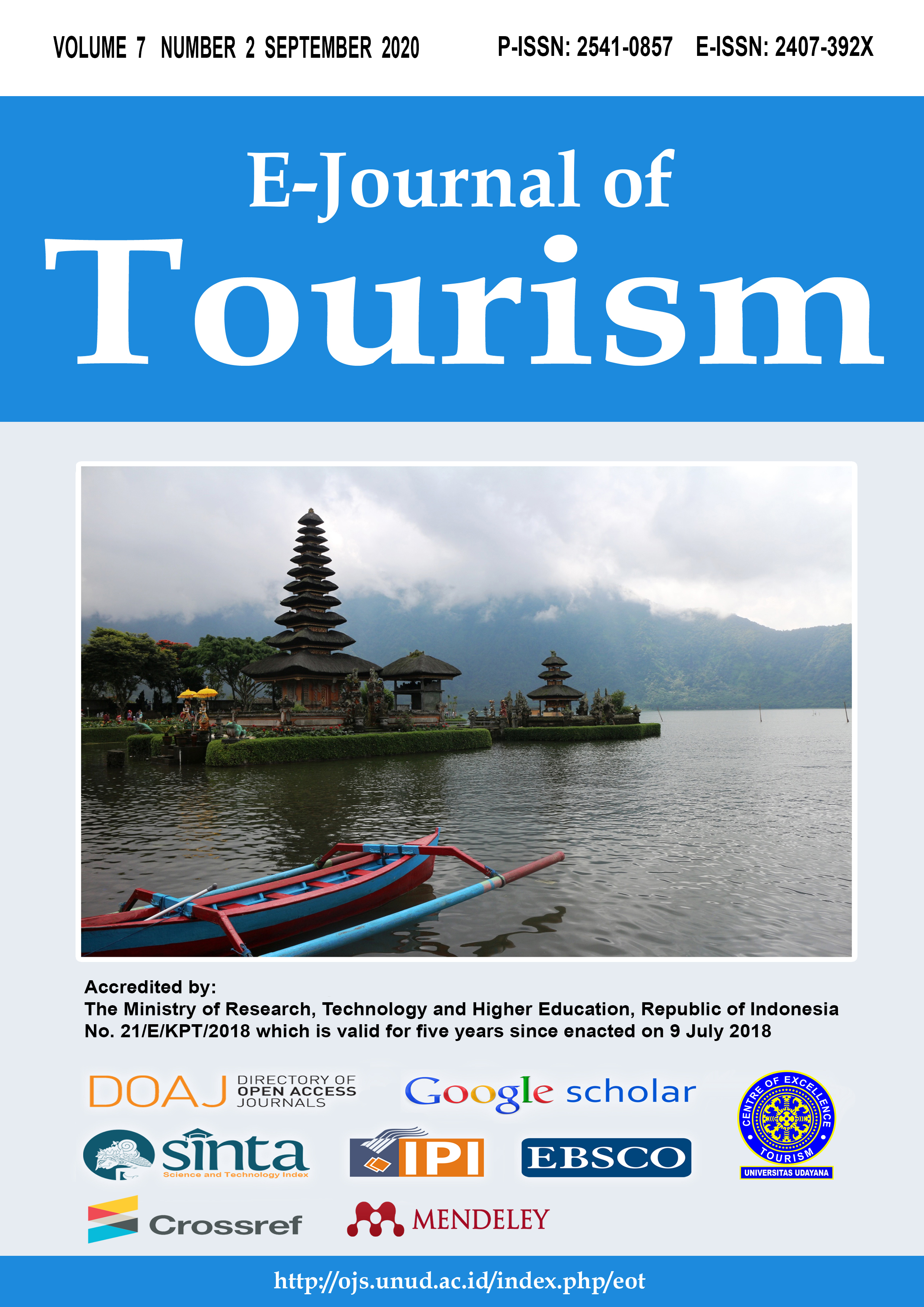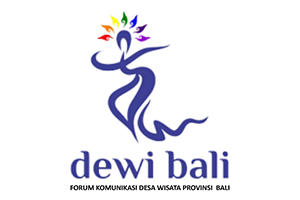Sustainability and Authenticity of Chinese Traditional Crafts in the Contexts of Luxury and Tourism
Abstract
Chinese crafts have been examined from economic, historical and aesthetic perspectives, but rather less attention has been devoted to them in the literature on luxury and tourism. When considering the former, it is worth noting that some of the world’s leading brands had their origins in craft businesses, notably Louis Vuitton, and that craft skills remain important for this industry in the 21st century. On the other hand, there is a common assumption that craft souvenirs represent a cheap and debased version of human material culture but, as many academics have asserted souvenirs come in a wide variety of forms, including what Graburn (2000) has called ‘pride goods’, in which peoples visited by tourists sell products that are simultaneously economically useful and boosters of esteem on behalf of the producing community. It is with these thoughts in mind that we turn our attention to the production of Chinese craft products in the early 21st century. As one of the leading handicraft producers in the world, the expanding demand for Chinese craft products has generated commercial opportunities and strong economic returns, it has also created challenges to the Chinese traditional crafts sector which may influence the direction and sustainability of its future development, and as such is worthy of deeper investigation and discussion.
Keywords: Chinese traditional crafts, luxury, tourism, sustainability, authenticity
Downloads
References
Barclay, A. (2017), Follow Me: Luxury Brands Turn to Social Media to Connect with Customers. South China Morning Post (10th October, 2017) https://www.scmp.com/business/companies/article/2114756/follow-me-luxury-brands-turn-social-media-connect-customers
Bergadaà, M. (2008) ‘Craftsmen of art, and their craft: the experience of authenticity and its materialization in the places where craftspeople and enlightened clients meet’, Recherche et Applications en Marketing (English Edition), 23(3), pp. 5-24. doi:10.1177/205157070802300302
Bruner, E. (2005), Culture on tour: ethnographies of travel. Chicago: University of Chicago Press
Chang, J., Wall, G. & Chang, C-L. (2008), ‘Perception of the Authenticity of Atayal Woven Handicrafts in Wulai, Taiwan’, Journal of Hospitality & Leisure Marketing, 16(4), pp. 385-409. doi: 10.1080/10507050801951700
Coeckelbergh, M. (2014) ‘Moral craftsmanship’, in Moran, S., Cropley, D. & Kaufman, J.C. (eds.) The ethics of creativity. London: Palgrave Macmillan, pp. 46-61.
China Daily (2011) ‘Time-Honored Brands Praised by Mao Zedong, Zhou Enlai and Deng Xiaoping’ (15th August, 2011) http://www.chinadaily.com.cn/china/19thcpcnationalcongress/2011-08/15/content_29579095.htm
Cohen, E. (1988)’ Authenticity and commoditization in tourism’, Annals of Tourism Research, 15 (3), pp. 371-386
Cohen, E. and Cohen, S.A. (2012), ‘Authentication: hot and cool’, Annals of Tourism Research, 39(3), pp. 1295-1314
Corrigan, G. (2002) Guizhou Province: Costume and Culture in Remote China. Guiyang: Ghuizhou Overseas Travel Corporation
Eno, R. (2010) ‘Mohist thought’, Indiana University, Early Chinese Thought [B/E/P374] – Fall 2010. Available at: http://www.iub.edu/~p374/Mohism.pdf (Accessed on: 31 July 2018)
Ernst & Young. (2012) Competitive study on handicrafts sector in China. New Delhi: Export Promotion Council for Handicrafts. Available at: http://www.epch.in/ChinaStudy/Report.pdf (Accessed on: 26 July 2018).
Europol & EUIPO. (2017) 2017 Situation Report on Counterfeiting and Piracy in the European Union. Alicante: EUIPO. Available at: https://euipo.europa.eu/tunnel-web/secure/webdav/guest/document_library/observatory/documents/reports/Situation%20Report%20EUIPO-Europol_en.pdf (Accessed on: 30 June 2018).
Fritz, K., Schoenmueller, V. & Bruhn, M. (2017), ‘Authenticity in branding – exploring antecedents and consequences of brand authenticity’, European Journal of Marketing, 51(2), pp. 324-348. doi: 10.1108/EJM-10-2014-0633
葛亮亮; 王珂. (2018) ‘你好!我是中华老字号……’, 人民日报. 6月5日.
Ge, L-L. & Wang, K. (2018) ‘Ni hao! Wo shi zhong hua lao zi hao……’, People’s Daily. 5th June. Available at: http://paper.people.com.cn/rmrb/html/2018-06/05/nw.D110000renmrb_20180605_1-06.htm (Accessed on: 18 July 2018).
Gilmore, J.H. & Pine, J. (2007), Authenticity: What Consumers Really Want, Boston: Harvard Business School Press.
Global Times (2016), Antique repair documentary becomes unexpected hit among China’s youth. Available at: http://www.globaltimes.cn/content/969784.shtml (Accessed on: 25 June 2018).
Graburn, N. (1984) ‘The evolution of tourist arts’, Annals of Tourism Research, 11(3), pp. 393-419. doi: 10.1016/0160-7383(84)90029-X
Graburn, N. (2000) Foreword in Hitchcock, M & Teague, K. (ed.) (2000) Souvenirs: The Material Culture of Tourism. Aldershot: Ashgate, pp. xii-xvii
Greenhalgh, P. (1997), 'The history of craft', in P. Dormer (ed.), The
Culture of Craft: Status and Future. Manchester: Manchester University Press, pp. 20-52
Greenhalgh, P. (ed.) (2002), The Persistence of Craft: the Applied Arts Today. London: A&C Black
Greenhalgh, P. (2010) ‘The History of craft’, in Lees-Maffei, G & Houze, R. (eds.) The Design History Reader. Oxford & New York: Berg Publishers, pp. 329-335
Hede, A-M., Garma, R., Josiassen, A. & Thyne, M. (2014), ‘Perceived authenticity of the visitor experience in museums: Conceptualization and initial empirical findings’, European Journal of Marketing, 48 (7/8), pp.1395-1412. doi: 10.1108/EJM-12-2011-0771
Griffiths, M.B., Chapman, M. and Christiansen, F. (2010) Chinese consumers: the Romantic reappraisal, Ethnography, 11:3, pp. 331-357
Heine, K., Phan, M. & Atwal, G. (2016), ‘Authenticity and prestige: what luxury brands could learn from the wine industry?’, Luxury Research Journal, 1(2), pp. 177-190. doi: 10.1504/LRJ.2016.078127
Hitchcock, M & D. Barsham (2013), ‘Prophets of nature: romantic ideals of nature and their continuing relevance to tourism today’ In Holden, A. & Fennell , D (eds) The Routledge Handbook of Tourism and the Environment. London; Routledge pp. 54-64
Hitchcock, M & Teague, K. (ed.) (2000) Souvenirs: The Material Culture of Tourism.
Aldershot: Ashgate
Hitzler, P. A. & Müller-Stewens, G. (2017), ‘The strategic role of authenticity in the luxury business’, in Gardetti, M.A. (ed.) Sustainable Management of Luxury. Singapore: Springer Singapore, pp. 29-60
Hu, Yongqi. (2017), ‘Plan to revitalize traditional crafts’, China Daily USA. 5 April. Available at: http://usa.chinadaily.com.cn/epaper/2017-04/05/content_28802519.htm (Accessed on: 22 June 2018)
Kapferer, J.N. & Bastien, V. (2012) The Luxury Strategy: Break the Rules of Marketing to Build Luxury Brands. London: Kogan Page
Lau, R.W.K. (2010), ‘Revisiting authenticity: a social realist approach’, Annals of Tourism Research, 37 (2), pp. 478-498
Kim, H. & Bonn, M. A. (2016) ‘Authenticity: Do tourist perceptions of winery experiences affect behavioral intentions?’, International Journal of Contemporary Hospitality Management, 28 (4), pp. 839-859. doi:10.1080/13683500.2010.493607
李飞;马燕. (2017) ‘中国能打造出世界级奢侈品品牌吗?’, 清华管理评论, 2017(1/2), pp. 40-47
Li, F. & Ma, Y. (2017) ‘Zhong guo neng da zao chu shi jie ji she chi pin pin pai ma?’, Tsinghua Business Review, 2017(1/2), pp. 40-47 http://crrc.sem.tsinghua.edu.cn/u/cms/crrc/201703/130756557zc5.pdf
Liu, M.j., Yannopolou, N., Bian, X., and Elliott, R. (2015), ‘Authenticity perceptions in the Chinese marketplace’, Journal of Business Research, 68:1, 27-33
MacCannell, D. (1973), ‘Staged authenticity: arrangements of social space in tourist settings’, American Journal of Sociology, 79 (3), pp. 598-603
Marron, D. B. & Steel, D. G. (2000), ‘Which countries protect intellectual property? The case of software piracy’, Economic Inquiry, 38 (2), pp. 159-174.
Ngai, J & Cho, E. (2012), ‘The young luxury consumers in China’, Young Consumers, 13(3), pp. 255-266. doi: 10.1108/17473611211261656
Parnwell, M. (1993), ‘Tourism and rural handicrafts in Thailand’, in Hitchcock, M., King, V. & Parnwell, M (eds.) Tourism in South-East Asia. London & New York: Routledge, pp. 234-257.
Ramkissoon, H & Uysal, M.S. (2011), ‘The effects of perceived authenticity, information search behaviour, motivation and destination imagery on cultural behavioural intentions of tourists’, Current Issues in Tourism, 14(6), pp. 537-562. doi:10.1080/13683500.2010.493607
Raustiala, K. and Sprigman, C. J. (2014), ‘Let them eat fake cake: e rational weakness of China’s anti-counterfeiting policy’, New York University Law and Economics Working Papers. Paper 376. Available at: http://lsr.nellco.org/nyu_lewp/376 (Accessed on: 25 June 2018).
Risatti, H. (2007), A Theory of Craft: Function and Aesthetic Expression, Chapel Hill: University of North Carolina Press.
Selwyn, T. (ed.) (1999), The Tourist Image: Myth and Myth Making in Tourism, Chichester: Wiley
Sennett, R. (2008), The Craftsman, New Haven & London: Yale University Press.
Shiner, L. (2012), ‘Blurred boundaries”? Rethinking the concept of craft and its relation to art and design’, Philosophy Compass, 7(4), pp. 230–244. doi: 10.1111/j.1747-9991.2012.00479.x
Song, Y. (2017), ‘Analysis of Successful reason of “Masters in Forbidden City”’, in 2017 4th International Conference on Literature, Linguistics and Arts (ICLLA 2017), 7-9 July 2017, Guilin, China. London: Francis Academic Press. pp. 159-164. Available at: https://webofproceedings.org/proceedings_series/ESSP/ICLLA%202017/ICLLA_082537.pdf (Accessed on: 26 July 2018).
Steiner, C.J. & Reisinger, Y. (2006) Understanding Existential Authenticity. Annals of Tourism Research, 33 (2), pp.299-318
UNESCO & ITC. (1997), ‘Adoption of recommendations and plan of action (item 6 of the agenda)’, in International symposium on “crafts and the international market: trade and customs codification” final report, 6-8 October 1997, Manila. Switzerland: International Trade Centre UNCTAD/WTO. pp. 6-10. Available at: http://unesdoc.unesco.org/images/0011/001114/111488eo.pdf (Accessed on: 17 June 2018).
State Council of the PRC. (1997) Regulations on protection of traditional arts and crafts. Available at: http://www.wipo.int/wipolex/en/text.jsp?file_id=198447 (Accessed on: 22 June 2018).
唐胜天, 陶 珂. (2014) ‘关于教育部重设工艺美术专业的思考’, 艺术探索, 28(6), pp. 56-58. doi: 10.13574/j.cnki.artsexp.2014.06.013
Tang, Sh-T. & Tao, K. (2014), ‘Guan yu jiao yu bu chong she gong yi mei shu zhuan ye de si kao’, Yi Shu Tan Suo, 28(6), pp. 56-58. doi: 10.13574/j.cnki.artsexp.2014.06.013
Thornton, P. H. (2002), ‘The rise of the corporation in a craft industry: conflict and conformity in institutional logics’, Academy of Management Journal, 45(1), pp. 8l-101. doi: 10.5465/3069286
田自秉. (2010) 中国工艺美术史. 修订本. 上海: 东方出版中心.
Tian, ZB. (2010) Zhong guo gong yi mei shu shi. Xiu Ding Ben. Shanghai: Dong Fang Chu Ban Zhong Xin.
Wherry, F. (2006), ‘The Social Sources of Authenticity in Global Handicraft Markets Evidence from Northern Thailand’, Journal of Consumer Culture, 6(1), pp. 5–32. doi: 10.1177/1469540506060867
UNESCO & ITC. (1997) ‘Adoption of recommendations and plan of action (item 6 of the agenda)’, in International symposium on “crafts and the international market: trade and customs codification” final report, 6-8 October 1997, Manila. Switzerland: International Trade Centre UNCTAD/WTO. pp. 6-10. Available at: http://unesdoc.unesco.org/images/0011/001114/111488eo.pdf (Accessed on: 17 June 2018).
UNESCO. (2016) The globalisation of cultural trade: a shift in consumption: international flows of cultural goods and services 2004-2013. Montreal, Quebec: UNESCO Institute for Statistics. Available at: http://dx.doi.org/10.15220/978-92-9189-185-6-en (Accessed on: 30 June 2018).
Van Bergen, R. (2017), In Europe, skilled craftsmanship is luxury. Why not in the rest of the world, too? Available at: https://www.weforum.org/agenda/2017/03/artesans-skilled-craftsmanship-equality-nest (Accessed on: 18 June 2018).
Wang, N. (1999), ‘Rethinking Authenticity in Tourism Experience’, Annals of Tourism Research, 26(2), pp. 349-370
许纪霖. (2016) 中国人为何缺少“工匠精神”?
Xu, Jilin. (2016) Zhong guo ren wei he que shao “gong jiang jing shen”? Available at: https://pit.ifeng.com/a/20160623/49223659_0.shtml (Accessed on: 17 June 2018).
朱孝岳. (2009) ‘关于“工艺美术”一词的几点诠释’, 装饰, 2009(12), pp. 25-27. doi: 10.16272/j.cnki.cn11-1392/j.2009.12.010
Zhu, XY. (2009) ‘Guan yu “gong yi mei shu” yi ci de ji dian quan shi (A Few Comments On the Concept of Arts & Crafts)’, Zhuang Shi, 2009(12), pp. 25-27.
朱孝岳, 徐勤. (2010) 设计概论. 第二版. 北京: 高等教育出版社.
Zhu, XY & Xu, Q. (2010) She ji gai lun. 2nd edn. Beijing: Gao deng jiao yu chu ban she.

This work is licensed under a Creative Commons Attribution 4.0 International License.
The copyright of the received article shall be assigned to the journal as the publisher of the journal. The intended copyright includes the right to publish the article in various forms (including reprints). The journal maintains the publishing rights to the published articles.




















